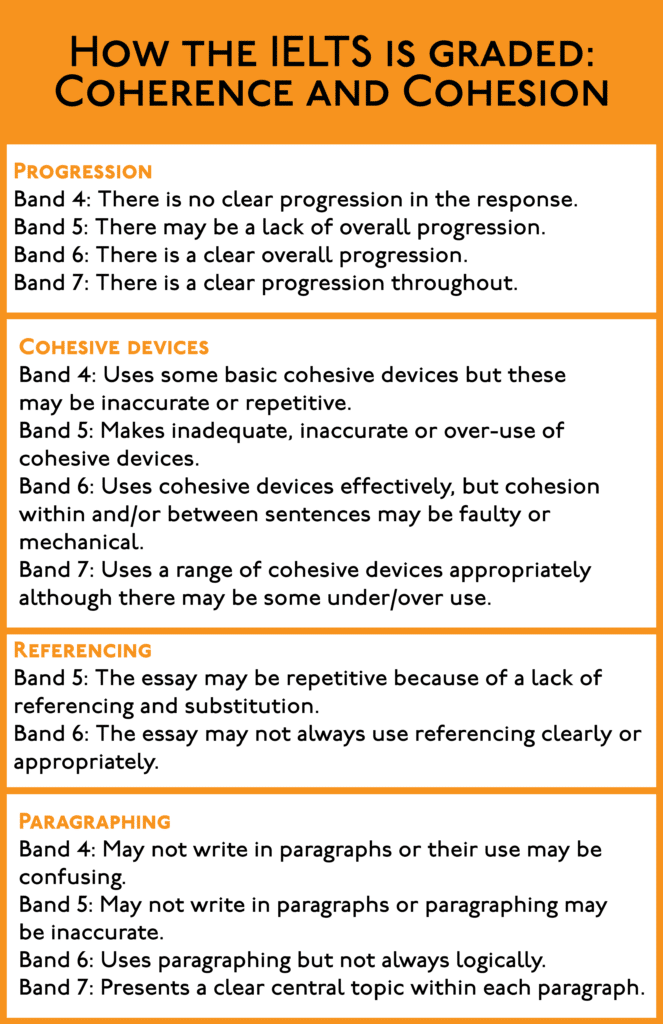What is IELTS coherence and Cohesion?
Coherence and cohesion is about how well you organise your ideas and how well those ideas flow into one another. When grading this section, your examiner will be looking at:
- How your ideas progress.
- How you use cohesive devices.
- How well you use referencing.
- How well you paragraph.
In this post we’ll take a look at what each of those things means as well and how to improve your coherence and cohesion score.

Progression
Progression is about being able to follow an argument throughout the whole essay. This can overlap quite significantly with what the examiners are looking for in the task response section. You can show progression by having a single argument run through your introduction, body paragraphs and conclusion. To do this you should:
- In the introduction, use your thesis statement to give a clear argument to the examiners.
- You can also use the introduction to introduce what your body paragraphs will say.
- In your body paragraphs, have a clear topic sentence which is linked to your central argument. The supporting sentences in the body paragraph should link to that paragraph’s topic sentence.
- Use your conclusion to remind the examiner of what your body paragraphs were about and to emphasise your thesis statement.
Cohesive devices
Cohesive devices are short phrases that don’t carry meaning on their own but show the relationship between different parts of your writing. Students often want to study cohesive devices by memorising a long list of them. However, it’s a much better idea to learn a few and be able to use them perfectly. Some important uses of cohesive devices are:
- To give the order of your ideas or tell the reader where in your essay they are:
-
- First,
- Second,
- Finally,
- In conclusion,
- To show an idea is linked to the previous idea:
-
- And
- Also
- Furthermore
- To give cause and effect:
-
- So,
- Because,
- Therefore
- As a result
- To show contrasting ideas:
-
- Although
- However
- Conversely
- In contrast
- To Give an example:
-
- For example
- For instance
- To highlight a point:
-
- Especially
- In particular
Referencing
Referencing is about using pronouns and relative pronouns to make your writing less repetitive. It’s best to demonstrate why this is important so here’s an example:
-
- Congestion charges have been opposed by regular commuters. Regular commuters argue that congestion charges make it too expensive for regular commuters to get to work every day.
- Congestion charges have been opposed by regular commuters. They argue that these charges make it too expensive for them to get to work.
From this example, we can see that without referencing our writing would get boring quickly. However, we also should not fall into the trap of using pronouns too often. Make sure it’s always clear who you’re referring to.
Paragraphing
The final aspect of coherence and cohesion is paragraphing. We can see that the examiners are looking for a “clear central topic” for each paragraph. What that means practically is that you should pick a quite narrow topic for each of these paragraphs. If you go for a broad idea, your supporting sentences will have to cover a lot of topics to fully cover that issue. When you do this, you lose cohesion from your paragraph.
There are two ways of making paragraphs in English. The first is to indent your paragraphs, the second is to leave a line between your paragraphs. Both of these are acceptable for the IELTS exam but I always recommend students to leave a line because it makes your paragraphs as obvious as possible to the examiner.